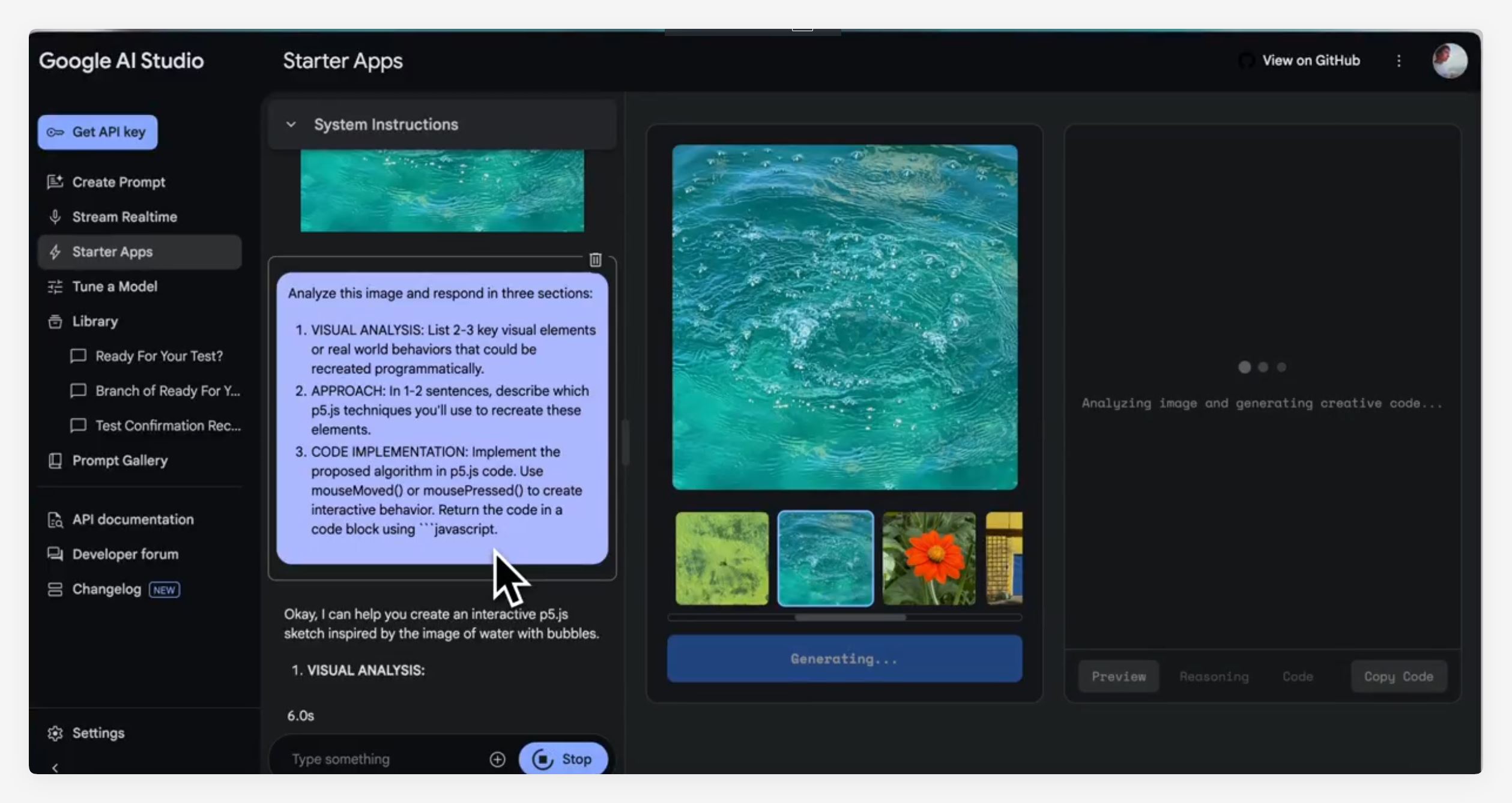
On March 6, 2025, according to the latest news from users on X platform, a hidden startup application called "Image to Code" quietly appeared in AI Studio. This application is powered by Gemini technology and can use images as input, analyze and inference, and finally generate corresponding program code to draw programmatic images. The news quickly attracted widespread attention from technology enthusiasts and developers.
"Image to Code": Intelligent conversion from image to code
According to the post, this "Image to Code" app shows the latest achievements of artificial intelligence in the fields of image processing and code generation. Users only need to upload an image, and Gemini can intelligently analyze it, understand the content and structure in the image, and generate program code that can reproduce the image. This technology not only reflects the powerful ability of AI in visual recognition, but also further combines it with programming capabilities, providing creative developers and technology enthusiasts with brand new tools.
Although the official does not provide specific application details or use cases, the potential application scenarios of this feature are imaginative. For example, designers can quickly generate interactive prototype code by uploading sketches; educators can use the tool to teach the combination of programming and image processing; and artists can even use it to explore more possibilities of code art.
Behind Gemini technology
Gemini is a popular technology in the field of AI and is known for its multimodal processing capabilities. It can not only process text, but also understand multiple types of data such as images and audio. The exposure of the "Image to Code" function further proves Gemini's potential in cross-domain integration. Compared with traditional image recognition technology, Gemini's uniqueness lies in its inference ability - it not only "understands" images, but also converts them into logical code output.
Video source: X platform user @testingcatalog
Hot discussions and expectations on the Internet
Some users believe that this app may become a "game changer" for AI-assisted development, significantly lowering the threshold from concept to implementation. However, some netizens expressed doubts about the maturity of the technology, pointing out that there is currently a lack of specific demonstration or open source code support, and the actual effect of the function remains to be verified. In addition, combined with the recent technological trends on the X platform, the launch of this function seems to be consistent with the popularization of AI tools. In the past few months, a number of AI-powered creative tools have been launched one after another, showing that artificial intelligence is accelerating its penetration into daily work and creation.
Hidden surprises from AI Studio
It is worth noting that "Image to Code" is described as a "hidden" application in AI Studio. This may mean it is currently in beta, or is only open to some users. AI Studio, as a platform that integrates multiple AI tools, has previously attracted attention for its innovation.
Future Outlook
Although there is still limited information about "Image to Code", it reflects the huge potential of AI technology in automation and creative support. If the app is officially launched and open to use, it could bring a brand new experience to developers, designers and even ordinary users. Industry insiders expect Google to release more details in the coming weeks, and may even provide public demonstrations in response to the community's eager anticipation.
As of press time, Google has not made a formal response to this news. But in any case, the exposure of this technology is enough to ignite people's imagination of the future of AI. Let's wait and see how Gemini redefines the relationship between people and code through "Image to Code".